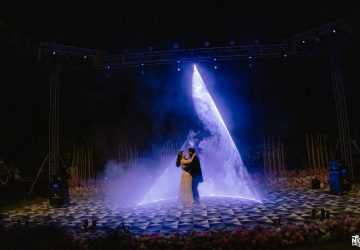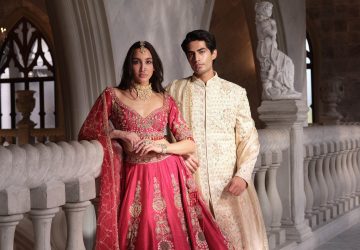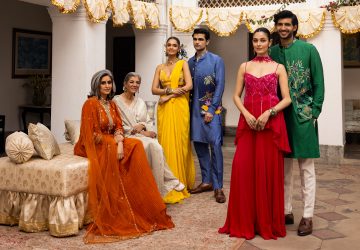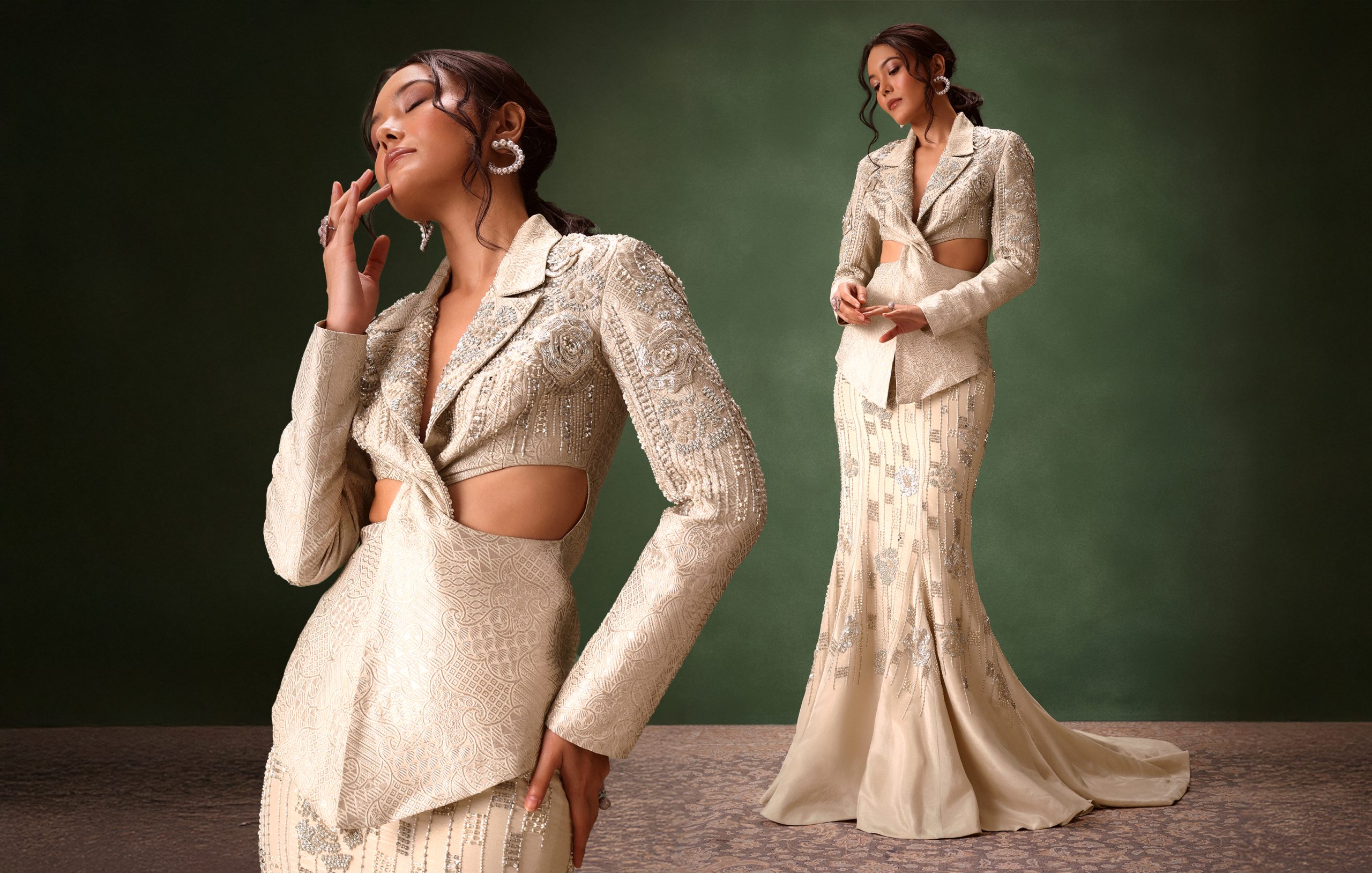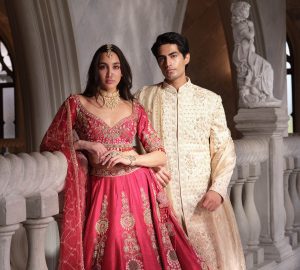India is not just a nation; it’s a work of art, and its fabrics? They’re actual strands of history. From weaves of India to the glint of Banarasi silk to the down-to-earth appeal of Tussar, every weave tells stories of dynasties, craftsmen, and centuries of tradition. If you’re the kind of person who resonates with slow, rare fabrics and fashion, adores heritage, or just wants to kill the game in a saree that has a story behind it, you’re in for a treat.
Let’s explore a few of the most stunning, unique, and awe-inspiring weaves of India. And don’t worry; we’ve also included some styling tips that’ll make you look like an absolute fashionista when wearing a handloom.
Exploring the Iconic Weaves of India
Banarasi Silk: A Testimony to Magnificence
Direct from the ghats of Varanasi, a rare fabric, the Banarasi silk is essentially the Mughal Empire in textile form. Admired for its zari work, florals, and rich textures, this type of weave in India was once included in the bridal trousseau of queens. If vintage glamour with a regal touch is your thing, this one’s for you.
Style tip: Team a Banarasi but make it blazer and mermaid skirt vibe, with oxidized chunky jewellery and a messy bun.

Kanjivaram Silk: A South Indian Legacy
Kanjivarams are gold in fabric form. These weaves of India, knitted in Tamil Nadu, are stunners that employ actual silver and gold yarns—yes, real precious metal! The designs tend to illustrate stories from Hindu epics, temple borders, or nature. It’s elegance, beauty, and heritage all packaged in one thing.
Gen Z hack: Wrap a Kanjivaram as a lehenga skirt and throw a crop top on. Blend classic with edgy for that desi pop-star vibe.

Chanderi Weave: The Sheer Elegance
From Madhya Pradesh’s heart comes the different types of weaves in India. Chanderi is your choice for light-as-air luxury. Silky and cottony, light and breezy, it’s ideal for daytime wedding or brunch occasions when you need to look fabulous but not overdone.
Style inspo: Throw it over pants and slay any day. Fusion chic? 100%.

Tussar Silk: Raw Luxury for the Connoisseur
Did you know Tussar silk is often called ‘wild silk’? Well, that’s right. These types of weaves in India are woven from cocoons found in forest trees. It has a very different kind of coarse texture and a rich, golden glow. Another fun fact: Primarily, this was crafted by tribal artisans in Jharkhand and Bihar. These fabrics are a celebration of indigenous skills, eco-conscious fashion and earthy opulence.
Vibe check: Pair your Tussar saree with combat boots and a bold lip for a killer power look. Boho meets boss lady.

Ajrakh Prints: A Sustainable Handblock Tradition
Ajrakh, all about prints, think symmetry, geometric magic and beautiful earthy tones. Don’t mistake it for weaves, these prints deserve a shoutout. Honestly, it definitely gives a sleek and classic touch to your wardrobe. Technically, Ajrakjh comes straight from Kutch and Sindh, using natural dyes and a method called resist printing and is passed down from over 4,000 years.
Fun idea: Ajrakh printed sarees are IT. Add statement jewellery for a bold look and a potli bag, and there you go- festive-ready and fun.

Ikat Weaves: Patterns of Heritage and Style
Ikat is another lovely type of weave in India, centuries old, done by the resist technique where yarns are dyed before being woven, resulting in signature blurred, tie-dye-like weaves of India. These types of weaves are found in regions like Odisha, Telangana, and Gujarat, fairly reflecting the cultural symbolism while effortlessly blending into bold and obviously contemporary fashion aesthetics.
Try this: The Ikat saree, printed with perfection. Yes, it’s a vibe. It screams artsy curator meets fashion editor.

Styling Tips for Rare Indian Fabrics
How to Accessorize Handloom Sarees for Weddings
- Go bold with earrings: Pair the prettiest oversized jhumkas with your traditional rare fabric saree or kurta, or for a much more diverse or contemporary style, you could opt for some good chunky hoops.
- Mix metals: Gold + silver? Yes, please. Mix metals are so in vogue right now, they go with any fit and add the stylish look we all want.
- Bags matter: Ditch the clutch, bring in embroidered or potli bags. Make this your fashion statement by pairing a potli with your weave of India look.
- Belts are a game-changer: Cinch your saree with a belt to redefine your silhouette.
Modern Draping Ideas for Traditional Fabrics
Reinvent your wardrobe with modern draping techniques, blending heritage with premium fashion sensibility. Fabrics like Banarasi, Jamdani, Chanderi and Khadi can be styled in contemporary styles. Let’s imagine belted sarees, pre-dreaped saree gowns, or half-drapes matched with structured blouses. Even rare fabrics such as Mashru, Ilkal, and Patola can be transformed into fluid skirts, asymmetrical overlays, or cape-style dupattas, creating striking silhouettes that are both rooted in tradition and globally appealing.
We give new life to the modern wardrobe by implementing the weaves of India. These different types of weaves in India are no longer limited to conventional draping; on the contrary, they’re being styled with pantsuits, jackets, and jumpsuits, giving them the perfect look for weddings, festive occasions, or even contemporary fashion editorials.
Wear the Story, Not Just the Saree
Choosing heritage weaves of India is more than just another fashion statement, it’s about cultural celebrations rather than hierarchical discrepancies. It’s about supporting the local artisans, preserving our age-old heritage and turning heads at any given moment. Be insta-ready, gala-perfect and occasion-approved.
So next time you pick a fit, ask yourself: What story do I want to wear today?
![]()
